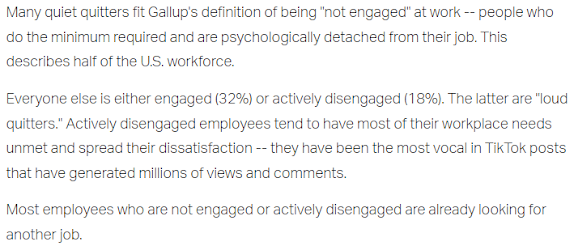Gallup took a long, hard look at the quiet quitting phenomena. In doing so, they created a great class example for talking about how I/O operationalizes a construct, measures a work-related attitude,
https://www.gallup.com/workplace/398306/quiet-quitting-real.aspx
1. Operationalization
People talk a lot about quiet quitting. Pop media discussion frames it as laziness, but is it? The Gallup people define it as a lack of employee engagement, a topic most of us teach in I/O.
Hey. Your students need a break from listening to your voice. Sorry.
4. Here are the discussion questions I used.
-What is the general definition that the media uses for Quiet Quitting?
-What are some of the complicated facets of Quiet Quitting described in the video.
-Why is Quiet Quitting a more complicated process?
-What construct does Gallup use instead of the term Quiet Quitting?




No comments:
Post a Comment